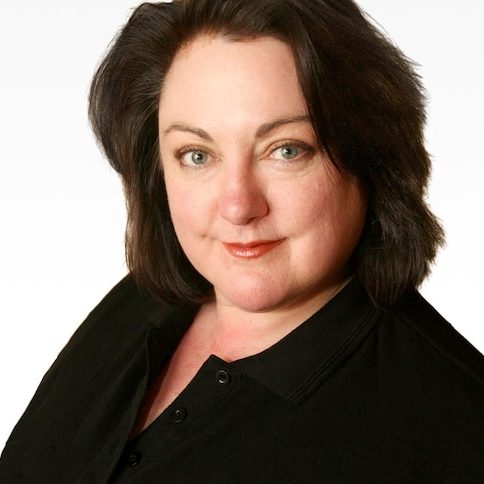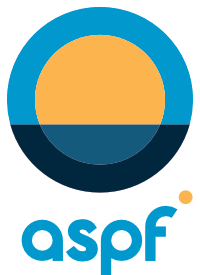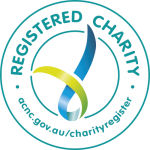
Transcript: ABC Radio's Belinda King interviews Prof. David Horgan about the new “Prevent A Suicide: What to Say” app and World Suicide Prevention Day.
7 September, 2023
Belinda King with you this morning. If someone near you is at risk of self-harm, would you know what to do? Would you know what to say? Would you know what to ask? Help might be available and it might be closer than you think. It might be as close as your smartphone. The Australian Suicide Prevention Foundation have created a free app and website to help guide you and perhaps helps you save a life. What to ask, what to say, what to do from people who have been there and for people who need help. Now this coming weekend it is World Suicide Prevention Day coming up on Sunday. So a good opportunity to put this on the radar. Associate Professor David Horgan joins us, founder of the Australian Suicide Prevention Foundation to tell us more about the development of this app and what it offers. David Horgan, good morning.
Good morning, Belinda.
It sounds a bit like a first, is it?
Yes, it actually is a first. All the services really around the world consist of trying to support the person who’s got suicidal ideas and perhaps with a lot of emphasis on either them trying to help themselves or encourage them to go and see a professional or a GP or a psychiatrist, if possible. But of course, we know how difficult that is. And I often say this is like saying to a drowning person, just swim a little bit harder in the right direction. Whereas the reality is that there are very concerned and capable family members and friends who are desperate and very frightened about what’s going to happen. They stand helplessly by and they really don’t know what to say. We did a survey through Resolve Strategic in November last year of over 2,000 people and almost 60% of the population don’t know what to say and are afraid they’ll say the wrong thing and make the situation worse. So what we have done is on our website and now on the app that we have produced, which anybody can use without training, We tell people the sorts of phrases that a professional would say to them.
Now I understand in having a look at your website yesterday ahead of our chat, that the texts and the phrases that have been put together have been medically tested. Can you tell me about that?
Well, not so much medically tested. We are trying to organize research for that, which of course is really complicated. How can you, in what we call a double blind fashion, forget which phrase is better than any other? Our app certainly is watching what phrases people download and putting them in the order of popularity. We’re not collecting any details about people at all who use our app or our website, but we are watching the popularity of the various phrases as they go out. But I can assure you, I’ve been doing this for longer than I care to remember, and we’ve also run past the medical people on our board and the psychologists that we know, and they all think that this is an excellent idea. And I must actually say we are very glad for the support of Lived Experience Australia and roses in the ocean, who are organizations of people who have indeed been there and who think this is an excellent idea.
So David, can you share with me a couple of things that you might say to someone that you’re worried about, someone that you’re nervous that they might be at risk of self-harm? What sort of phrases are we talking about here?
Well, you might say I am concerned about you so that in fact you introduce the topic. You don’t seem to be your normal self or you don’t seem as bright and sparky as usual. Is there anything wrong? Are you feeling very stressed? I think stress is more acceptable than asking people straight out are they depressed or whatever. And then you might ask them if they really have been mentioning, “I wish I wasn’t alive,” you might confirm that with them. Do you wish you weren’t alive? You might even say, “Have you been taking risks?” That’s not a common question, but it gives an indicator of what people are thinking about their life. And then you might even say, “Do you wish you did not wake up in the morning?” And if they say yes to that, then you would escalate it a bit further, saying, “Have you thought of doing something to yourself?” And are these thoughts, if they say yes to that, then you might say, “Are they mild thoughts, medium, and straight? They’re strong thoughts.” And that gives you some idea of what you’re dealing with.
Wow. Okay. And what else is available through the app? You’ve obviously got the capacity to give people tools to help guide a conversation. Are there, is there the capacity to reach out for further assistance or ideas as to where you can direct someone or get some immediate help?
Well I think that your question indicates the way we’ve all been approaching this for years until we came up with this concept. It’s all where are they going to get some help? Some help, but really a lot of people either can’t get help or will refuse to make a call to a crisis liner, can’t get a call through or can’t get to a professional. So, even if they do, what is one contact really going to do in a problem that goes on for weeks, maybe months? So people are going to need ongoing intervention, not just one call. And the people who’ve got most involvement in this, of course, are family and friends. So if you had a member of your own family, a close friend who was saying I wish I wasn’t alive, or yes, I really am thinking of doing something myself, if you ask them, you would feel totally helpless. So we want to stop the helplessness space involving an extra dimension. So this is really just an extra tool, an extra dimension of what can be done so while whatever help is currently available can be used or tried to be used, we can tell you the things that can be said and instead of saying it because it’s hard to look to a person face to face and say things it’s much more acceptable now especially among young people to send texts about difficult subjects. And there’s a there’s a whole range of them.
A whole raft on looking at the website and it also has a section here support for you so as a family friend or a personal friend of someone going through a rough time there are suggestions for support for yourself as well.
Exactly and could I point out about the text while you mentioned them? We have come up with this nifty little trick thanks to our IT people that you look at your phone you see that’s a useful text to send to the person concerned about. You just click it and it immediately appears in the message section of your telephone so you don’t have to copy and paste. You just touch the text and it will go onto your phone. You can add their name, add a personal comment or just send the text as it is.
Right, okay. So if people would like to get the app, it is available just at your normal app stores?
Yes it’s called “Prevent a Suicide: What to Say”.
And the website that accompanies it is intoughtimestext.org.
That’s correct yes. Intoughtimestext.org.
Associate Professor David Horgan thank you very much for joining us this morning.
Thank you very much Belinda.
And if this conversation has has raised any concerns for you at all. Lifeline of course is available 24/7, 131114 and Beyondblue 1300 224 636.
*Important Disclaimer: Our texts are approved by those who themselves had suicidal thoughts, and by medical and other mental health professionals. This site is medical information only, and is not to be taken as diagnosis, advice or treatment, which can only be decided by your own doctor or mental health professional.


Australian Suicide
Prevention Foundation
For over 20 years we’ve provided Australia-wide suicide prevention to every and any vulnerable Australian, whether they be in metropolitan, rural or isolated areas.
Support
By donating to or otherwise assisting inToughTimesText.org (a programme from ASPF.org) you are helping hundreds of thousands of people who have or will have suicidal ideas.

